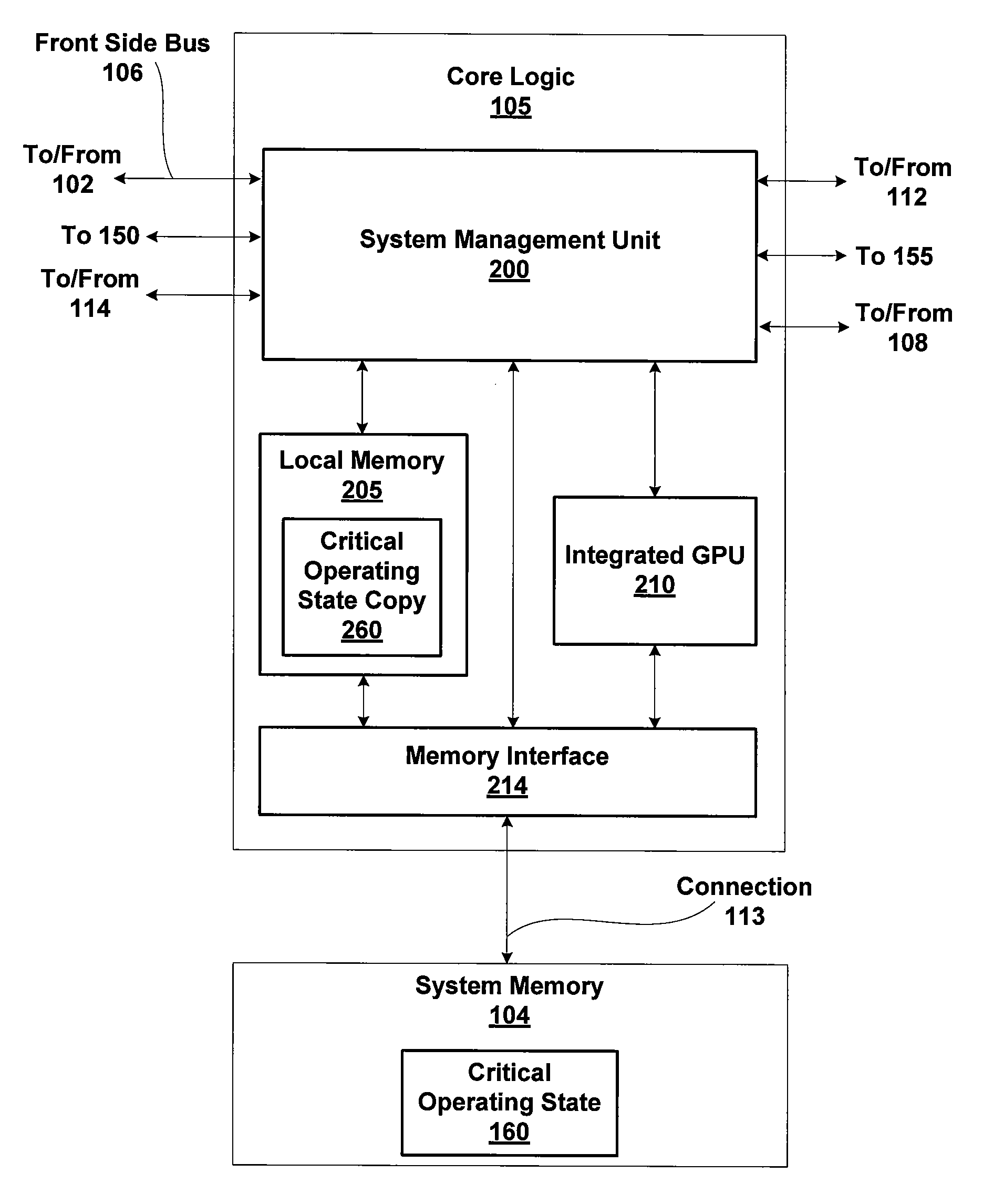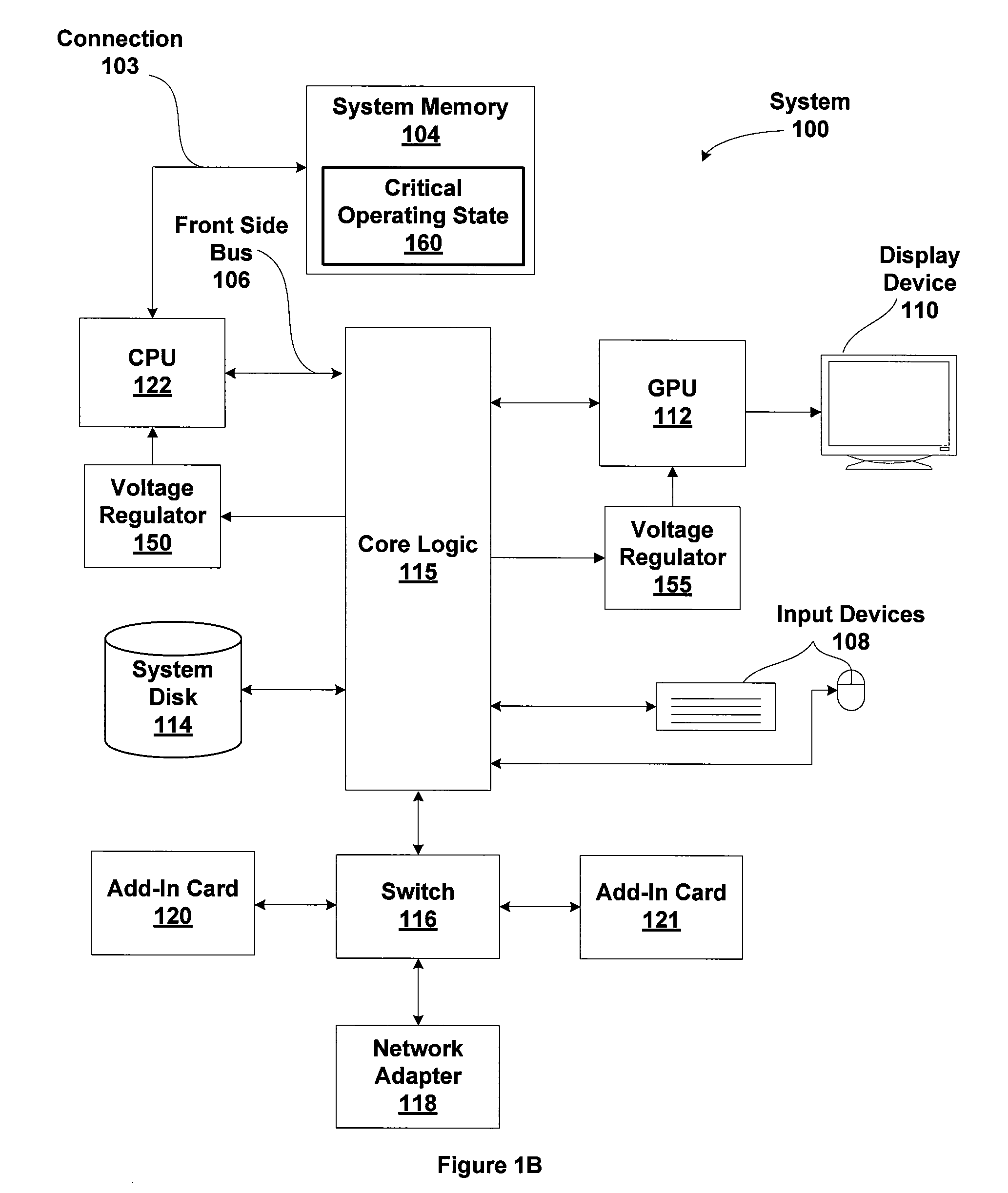Platform-based idle-time processing
a technology of platform-based idle time and processing, applied in the direction of data processing power supply, multi-programming arrangement, instruments, etc., can solve the problem of continuing to consume power, and achieve the effect of extending the idle time of the cpu and reducing power consumption
- Summary
- Abstract
- Description
- Claims
- Application Information
AI Technical Summary
Benefits of technology
Problems solved by technology
Method used
Image
Examples
Embodiment Construction
[0014]In the following description, numerous specific details are set forth to provide a more thorough understanding of the present invention. However, it will be apparent to one of skill in the art that the present invention may be practiced without one or more of these specific details. In other instances, well-known features have not been described in order to avoid obscuring the present invention.
System Overview
[0015]FIG. 1A is a block diagram illustrating a computer system 100 configured to implement one or more aspects of the present invention. Computer system 100 is a hybrid computing platform that includes multiple processing units in order to provide various levels of activities and levels of power consumption. Computer system 100 includes a central processing unit (CPU) 102 and a system memory 104 communicating via a bus path that includes a core logic 105. A critical operating state 160 is stored in system memory 104. Prior transitioning to a low power operating mode, CPU...
PUM
 Login to View More
Login to View More Abstract
Description
Claims
Application Information
 Login to View More
Login to View More - R&D
- Intellectual Property
- Life Sciences
- Materials
- Tech Scout
- Unparalleled Data Quality
- Higher Quality Content
- 60% Fewer Hallucinations
Browse by: Latest US Patents, China's latest patents, Technical Efficacy Thesaurus, Application Domain, Technology Topic, Popular Technical Reports.
© 2025 PatSnap. All rights reserved.Legal|Privacy policy|Modern Slavery Act Transparency Statement|Sitemap|About US| Contact US: help@patsnap.com



